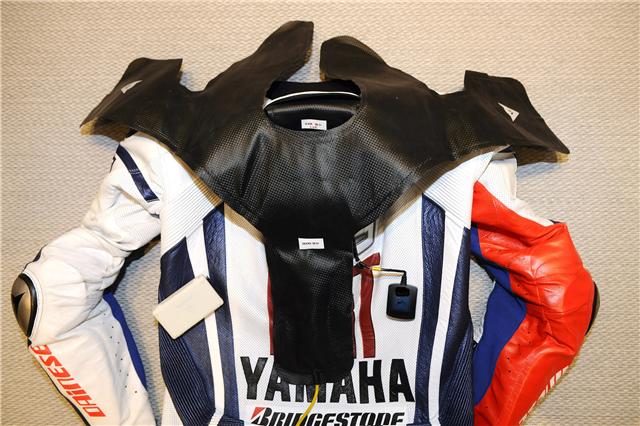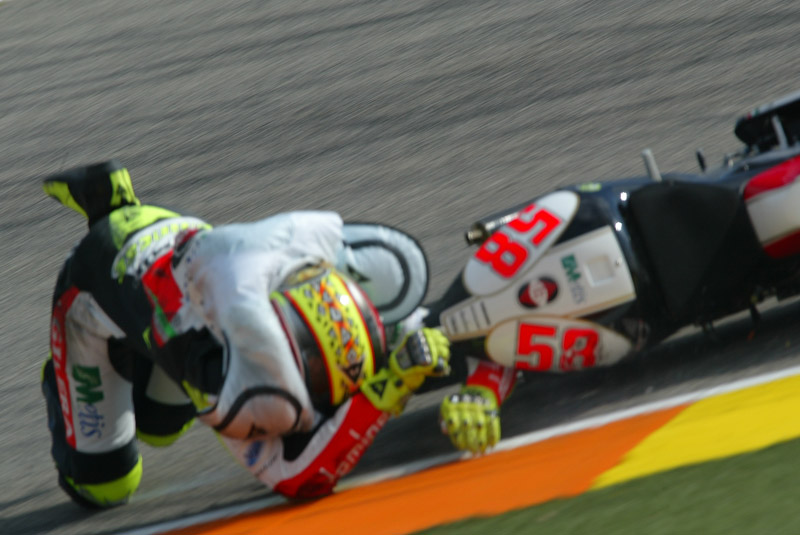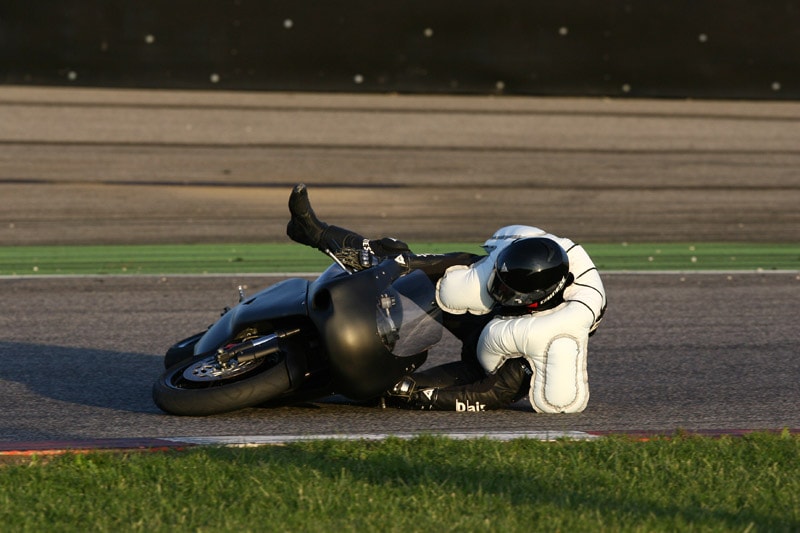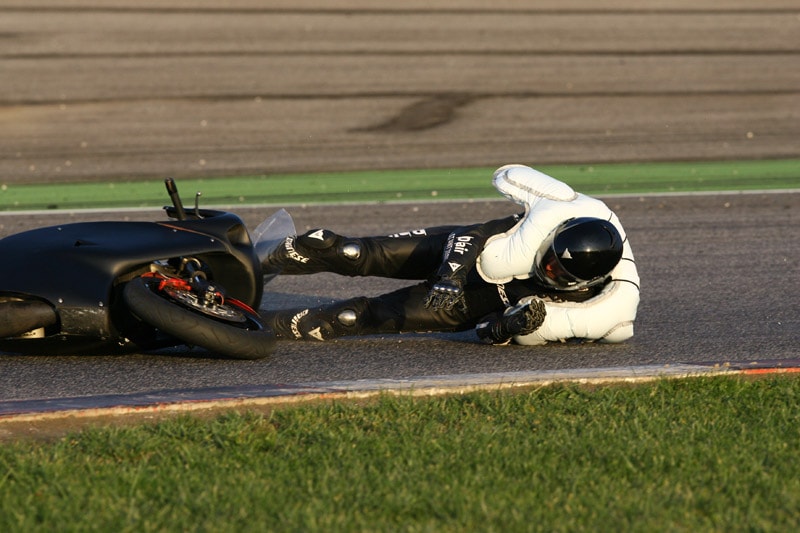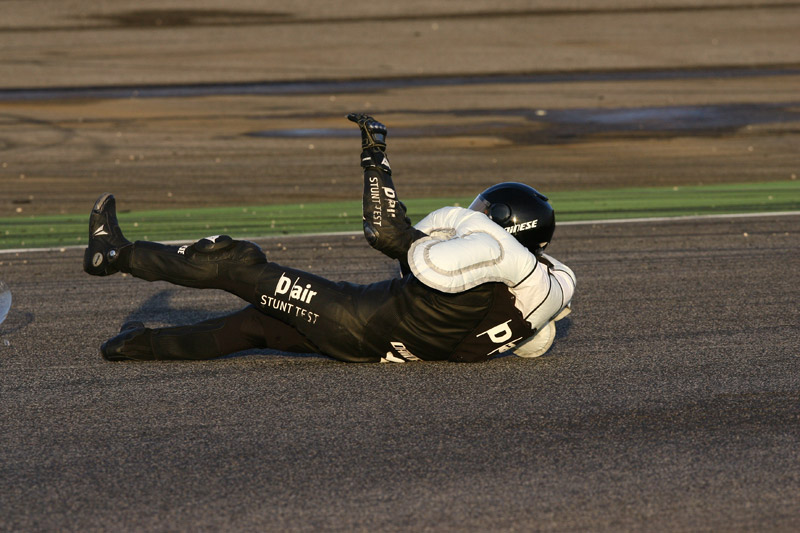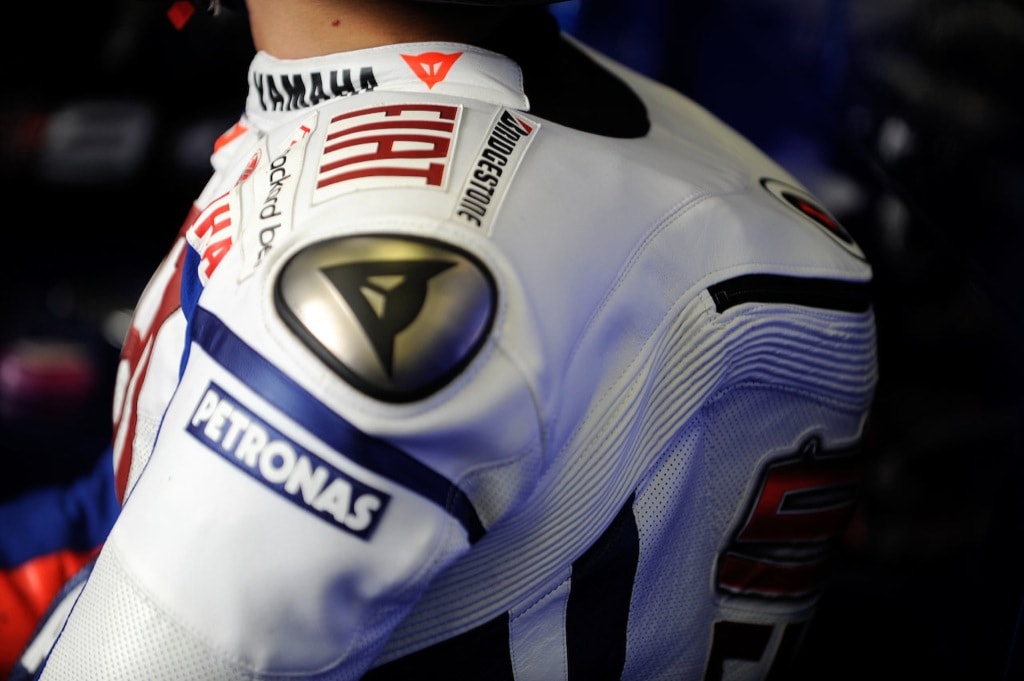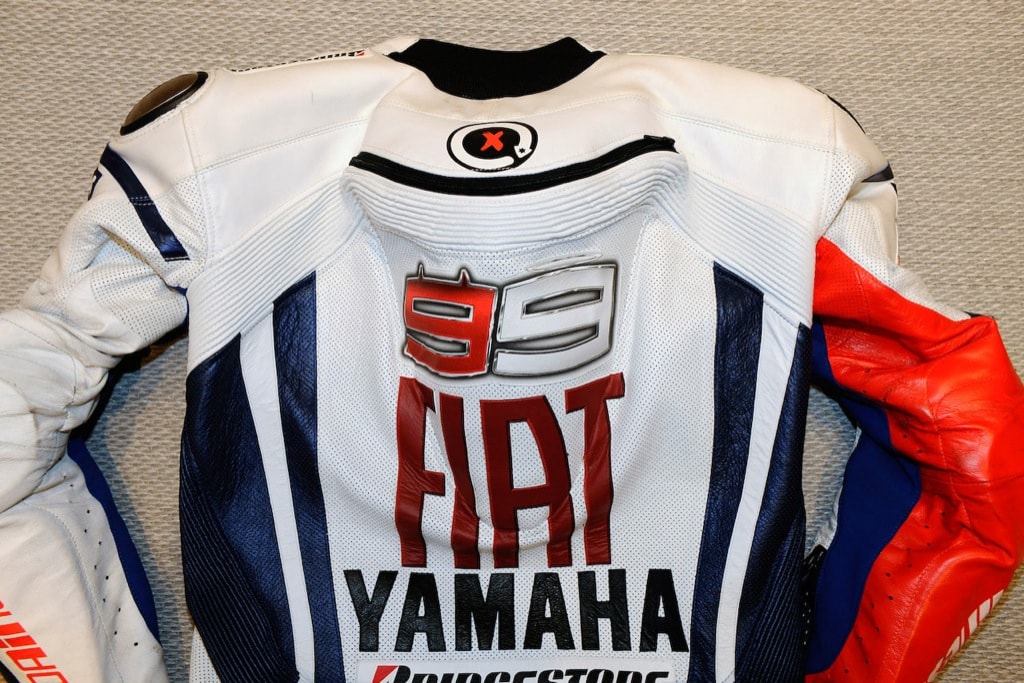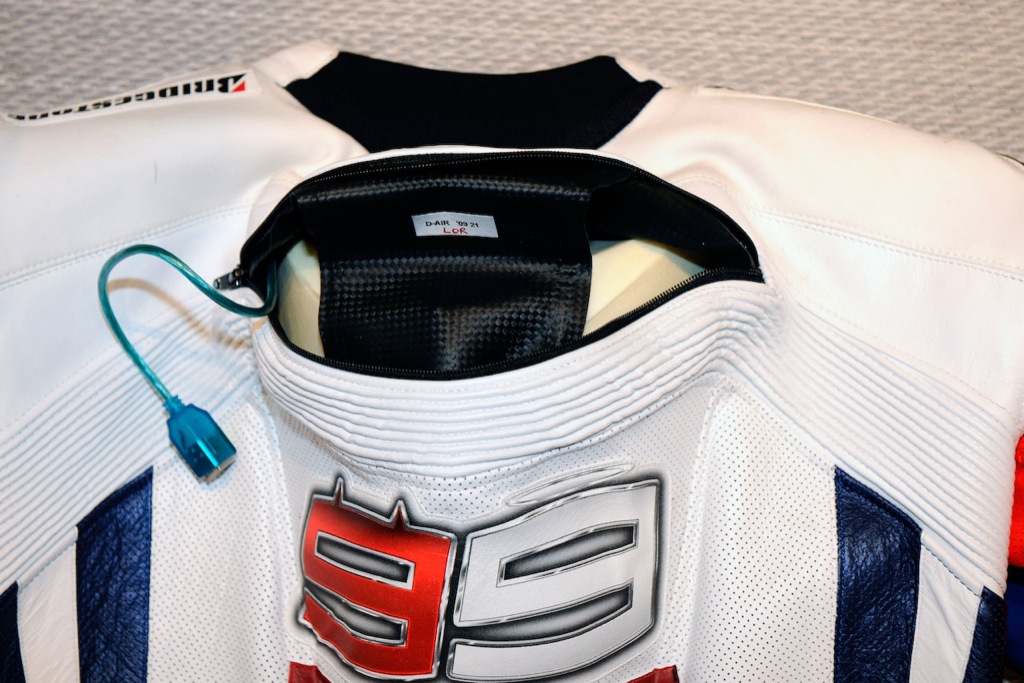Wearing a proper safety gear is crucial both while racing as well as when riding the open road. One of the best safety equipment manufacturers in the world is the Italian company Dainese, which has been providing riders with a high-quality and reliability protective wear ever since 1972. Dainese is, in fact, one of the first companies to begin working on airbag-equipped racing suits, perfected a prototype, conducted several tests and is currently under way to bringing the system to regular road riders.
After more than 10 years of study and experiments, D-Tec (Dainese Technology Center), the Dainese R&D department, introduced D-air Racing, an innovative airbag system set out to revolutionize the motorcycling racing industry.
The system was not used only in the heavyweight MotoGP class competition by Yamaha riders Valentino Rossi and Jorge Lorenzo, but Marco Simoncelli, Thomas Luthi and Michi Ranseder also chose to wear D-air in the 250 cc and 125 cc classes. Simoncelli was in fact the first rider that tested the D-air Racing airbag in November 2007 during the season's final Grand Prix race in Valencia, when it was also the first time the system opened.
Tests conducted in the D-Tec laboratories document shock absorption values offered by the D-Air system improve safety an additional 80 percent over the already high titanium composite, due to the use of the airbag.
What was really interesting at this new system from Dainese was that it was designed to provide protection for areas that conventional safety gear usually leave exposed, namely shoulders, collarbones and neck. The entire system was, in fact, fitted in a special attachment (or ‘sack,’ as Dainese calls it) placed on the rider's shoulders and back. The D-Air safety system works without any connection to the motorcycle. This year, Guy Martin wears the Dainese system at Isle of Mann.
The sack comprised a GPS receiver, various accelerometers, a hybrid gas generator, a processor to evaluate data (and trigger the airbag inflator), lithium batteries, and the airbag envelope. Unlike a car airbag system, in the D-Air, the processor is looking at the GPS sensor for speed and position, at three angular velocity sensors for rotational data, and at three linear accelerometers.
The device triggers when the rider falls due to sliding of the front (front lowside) or rear (back lowside) wheel or in the event of a highside. The trigger signal then reaches a gas generator which inflates the bag in approximately 40 milliseconds.
Since then, Dainese has taken big steps forward in perfecting the system, which has improved in regard to comfort and the greater integration of the system into the suit. Following detailed data collected from all the tested conducted so far, the volume of the sack was reduced, the protective areas were redistributed, and the system's inflation pressure was increased.
When opened, the latest D-Air Racing protects shoulders and the collar bones areas primarily. Furthermore, the airbag sack creates a surface for the resting and support of the helmet that limits the movement of the neck. The airbag deflates all by itself and the suit returns to its original form. According to Dainese, the bag takes 20 milliseconds to inflate, stays inflated for 5 seconds, and fully deflates 20 seconds later. What is really interesting is that after deflation, the rider can continue racing.
The new device is housed completely inside the suit and therefore does not require removal after opening because it is the suit itself that expands to allow the sack to deploy. Total weight has also been reduced by around 20 percent. User interface represented by a three-colour LED positioned on the suit's upper right arm was introduced in order to improve system feasibility and simplified control.
After more than 10 years of study and experiments, D-Tec (Dainese Technology Center), the Dainese R&D department, introduced D-air Racing, an innovative airbag system set out to revolutionize the motorcycling racing industry.
The system was not used only in the heavyweight MotoGP class competition by Yamaha riders Valentino Rossi and Jorge Lorenzo, but Marco Simoncelli, Thomas Luthi and Michi Ranseder also chose to wear D-air in the 250 cc and 125 cc classes. Simoncelli was in fact the first rider that tested the D-air Racing airbag in November 2007 during the season's final Grand Prix race in Valencia, when it was also the first time the system opened.
Tests conducted in the D-Tec laboratories document shock absorption values offered by the D-Air system improve safety an additional 80 percent over the already high titanium composite, due to the use of the airbag.
What was really interesting at this new system from Dainese was that it was designed to provide protection for areas that conventional safety gear usually leave exposed, namely shoulders, collarbones and neck. The entire system was, in fact, fitted in a special attachment (or ‘sack,’ as Dainese calls it) placed on the rider's shoulders and back. The D-Air safety system works without any connection to the motorcycle. This year, Guy Martin wears the Dainese system at Isle of Mann.
The sack comprised a GPS receiver, various accelerometers, a hybrid gas generator, a processor to evaluate data (and trigger the airbag inflator), lithium batteries, and the airbag envelope. Unlike a car airbag system, in the D-Air, the processor is looking at the GPS sensor for speed and position, at three angular velocity sensors for rotational data, and at three linear accelerometers.
The device triggers when the rider falls due to sliding of the front (front lowside) or rear (back lowside) wheel or in the event of a highside. The trigger signal then reaches a gas generator which inflates the bag in approximately 40 milliseconds.
Since then, Dainese has taken big steps forward in perfecting the system, which has improved in regard to comfort and the greater integration of the system into the suit. Following detailed data collected from all the tested conducted so far, the volume of the sack was reduced, the protective areas were redistributed, and the system's inflation pressure was increased.
When opened, the latest D-Air Racing protects shoulders and the collar bones areas primarily. Furthermore, the airbag sack creates a surface for the resting and support of the helmet that limits the movement of the neck. The airbag deflates all by itself and the suit returns to its original form. According to Dainese, the bag takes 20 milliseconds to inflate, stays inflated for 5 seconds, and fully deflates 20 seconds later. What is really interesting is that after deflation, the rider can continue racing.
The new device is housed completely inside the suit and therefore does not require removal after opening because it is the suit itself that expands to allow the sack to deploy. Total weight has also been reduced by around 20 percent. User interface represented by a three-colour LED positioned on the suit's upper right arm was introduced in order to improve system feasibility and simplified control.
